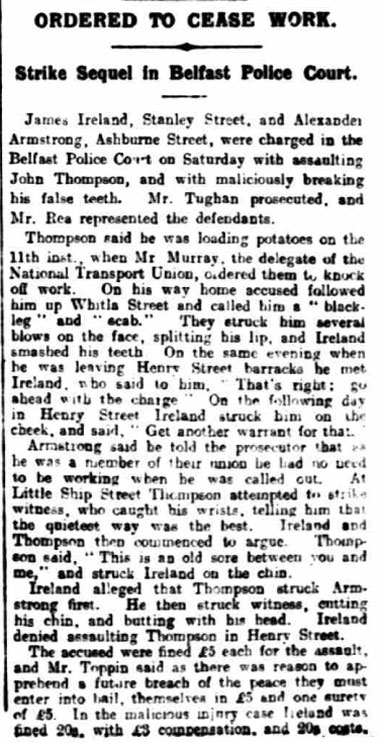Private Alexander Armstrong
The background of this man is not known at present, other than that he appears to have been from Belfast.
Alexander Armstrong enlisted in the 6th (Inniskilling) Dragoons Service Squadron between 13 and 20 November 1914 (No. UD/147). On 6 October 1915 he embarked for France with his squadron, which was then serving as divisional cavalry to the 36th (Ulster) Division.
In June 1916 the Inniskilling squadron joined with C and F Squadrons of the North Irish Horse to form the 2nd North Irish Horse Regiment, serving as corps cavalry to X Corps until September 1917, when the regiment was disbanded and its men transferred to the infantry.
Armstrong was probably one of 70 men given the job of conducting the regiment's horses to Egypt, to be handed over for use by mounted units there. They embarked from Marseilles on board HMT Bohemian on 25 August. After a month at Alexandria they returned to France, via Italy. On 5 October 1917 they arrived at the 36th (Ulster) Division Infantry Base Depot at Harfleur for infantry training, and after just a few days were posted to the 9th (Service) Battalion, Royal Irish Fusiliers – which had been renamed the 9th (North Irish Horse) Battalion – joining it in the field at Ruyaulcourt on 12 October. Armstrong was issued regimental number 41624.
According to Nick Metcalfe in his book Blacker's Boys, he was wounded at Moeuvres on 22 or 23 November 1917 during the Battle of Cambrai. Evacuated to England, he was admitted to the Edinburgh War Hospital.
On 13 July 1919 Armstrong was transferred to the Royal Army Service Corps (No. T/454320). He was discharged from the army on 25 October that year. He was later awarded a gratuity of £25 for flat feet, aggravated by his military service.
After the war Armstrong lived at 24 Ashburne Street, Belfast, and later at 293 Donegall Road. He is probably the Alexander Armstrong referred to in the article below.

Belfast News-Letter, 17 May 1926
This page last updated 10 April 2023.
